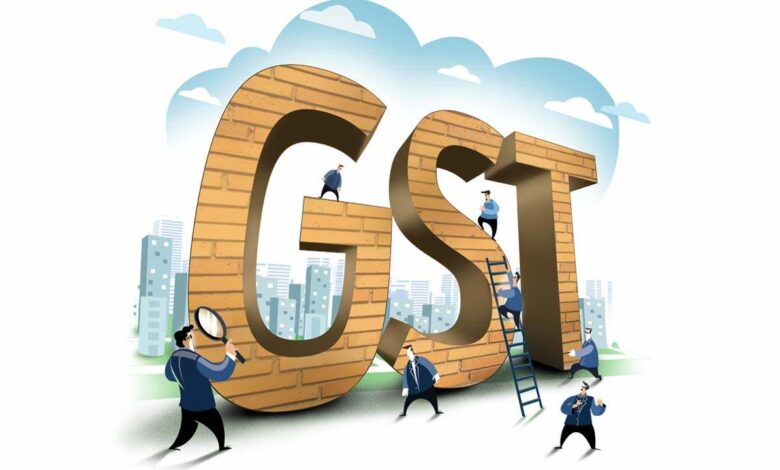GST collection at record-high of Rs 1.15 lakh cr in Dec’20

GST collections surged to an all-time high of over Rs 1.15 lakh crore in December as economic activities picked up after lifting of stringent lockdown restrictions.
Mop-up from the Goods and Services Tax (GST), which is levied when a consumable item is sold or a service such as travel booking rendered, in December was 12 per cent higher than such receipts in the same month of 2019.
At Rs 1,15,174 crore, the collections were 10 per cent more than the mop-up in the previous month — the biggest growth in monthly revenues in the last 21 months.
In a statement, the finance ministry said the December collections were the highest ever since the implementation of the nationwide tax in July 2017.
The previous best was in April 2019 when Rs 113,866 crore was collected.
This is the third straight month of over Rs 1 lakh crore tax collections and the fourth consecutive month this fiscal when GST collections have outperformed comparable months from 2019, a sign of strong recovery.
The increase in tax collections was due to the “combined effect of the rapid economic recovery post-pandemic and the nationwide drive against GST evaders and fake bills along with many systemic changes introduced recently, which have led to improved compliance,” the statement said.
GST collections, which directly reflect the state of economic activity, had plummeted to a record low of Rs 32,172 crore in April 2020, after the government imposed a nationwide lockdown to curb the spread of coronavirus.
The lockdown, categorised by several agencies as one of the strictest in the world, pummelled the economy as demand dried up and non-essential businesses were shuttered.
That quarter, the economy contracted by the steepest ever 23.9 per cent.
As restrictions were gradually lifted, many parts of the economy were able to spring back into action although output remains well below the pre-pandemic levels.
Commenting on the GST numbers, Shardul Amarchand Mangaldas & Co partner Rajat Bose said the government should provide a breakup of the GST collected through the filing of returns and the tax collected through recovery drives to give a true picture of the extent of economic recovery.
Deloitte India Senior Director Atul Gupta said the recent changes introduced and effectively implemented in GST technology platform like e-invoicing and of matching of supplier invoices along with strict enforcement by revenue authorities in checking fraudulent invoices, has induced an enhanced degree of reporting compliance.
“GST revenue is likely to further grow in the remaining quarter of this financial year and hopefully ease the pressure on the fiscal front in this year of unprecedented economic de-growth,” he said.
In the statement, the finance ministry said 87 lakh GSTR-3B returns were filed for the month of November till Thursday.
During December 2020, revenues from the import of goods were 27 per cent higher and revenues from domestic transactions (including import of services) were 8 per cent higher than the receipts from these sources during the same month of 2019.
The Central GST mop-up stood at Rs 21,365 crore, State GST Rs 27,804 crore, Integrated GST Rs 57,426 crore (including Rs 27,050 crore collected on import of goods) and cess was Rs 8,579 crore (including Rs 971 crore collected on import of goods).
The government has settled Rs 23,276 crore to CGST and Rs 17,681 crore to SGST from IGST as a regular settlement. The total revenue earned by the central government and the state governments after regular settlement in the month of December was Rs 44,641 crore for CGST and Rs 45,485 crore for SGST.
“With major states reporting an increase ranging from 6 to 15 per cent in their GST collections, compared to the same period last year, it is expected that some of the reductions in collections seen in the earlier part of the current fiscal, would be made up by the improving collections in the past three months,” Deloitte India Senior Director M S Mani said
CII Director General Chandrajit Banerjee said GST revenue growth shows that industry is bouncing back to normalcy.
“The increase in the revenue from import of goods indicates that Indian economy is on the fast track of growth now after a long dip due to COVID lockdown,” he added.
GST revenues have topped Rs 1 lakh crore in eight out of 12 months of 2019-20 fiscal. However, in the current fiscal, the revenues have taken a hit due to the COVID-19 pandemic.
Revenue in April was Rs 32,172 crore, followed by May (Rs 62,151 crore), June (Rs 90,917 crore), July (Rs 87,422 crore), August (Rs 86,449 crore), September (Rs 95,480 crore), October (Rs 1,05,155 crore), November (Rs 1,04,963 crore) and December (Rs 1,15,174 crore).
The GST revenue in April-December 2020 was down 14 per cent compared to the same period of the previous year.
The average growth in GST revenues during the October-December quarter has been 7.3 per cent as compared to negative 8.2 per cent during the July-September quarter.
EY Tax Partner Abhishek Jain said the GST collections touching a record high despite that we are not completely out of the pandemic indicates a remarkable recovery in the economy.
“Some of it could also be due to the plugging of revenue leakage by the government on account of fake credits through fraudulent invoicing and introduction of e-invoicing,” he said.




